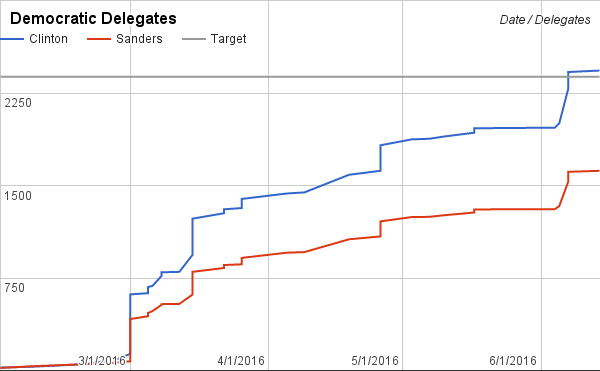There’s a lot of talk from Bernie Sanders supporters about the super delegate race, and it’s pretty clear that Clinton currently holds a commanding lead with 460 of the 712 on the board. They argue, though, that those delegates will start flipping to Sanders when he builds a pledged delegate lead. Based on our projections, however, Clinton is likely to earn the 2,382 delegates she needs to win without using any of her pledged delegates.
Based on our count, Clinton holds a 699 to 458 lead in pledged delegates. Based on current polling, that lead should expand considerably on March 15:

Of the above, only Missouri lacks state-specific data and is therefore based on Clinton’s nationwide 51%-37.6% lead. If those numbers hold, Clinton will hold a 1244-776 lead following those votes.
Is that impossible to make up? Well, mathematically, no. But the path to get there is highly improbable. To make up a 480-delegate deficit, Sanders would have to win every single delegate in Pennsylvania AND New York, for example.
Does that mean Hillary has it locked up? Well, no. After March 15, we see Sanders basically keeping pace with her. Our projection sees her building her lead a bit on April 22, but mostly that’s just big-delegate states that are relying on the national poll. Unless things change, she won’t actually wrap it up until the last day of voting on June 7:

Sanders is now on record saying he won’t drop out before the convention. That probably makes sense. There’s not much that Clinton can offer him now that will make him back down, and it probably helps her general-election campaign to have the come-together moment happen at the convention. That will probably happen: it’s hard to see Sanders losing the political revolution fight and then letting Trump take the White House.
